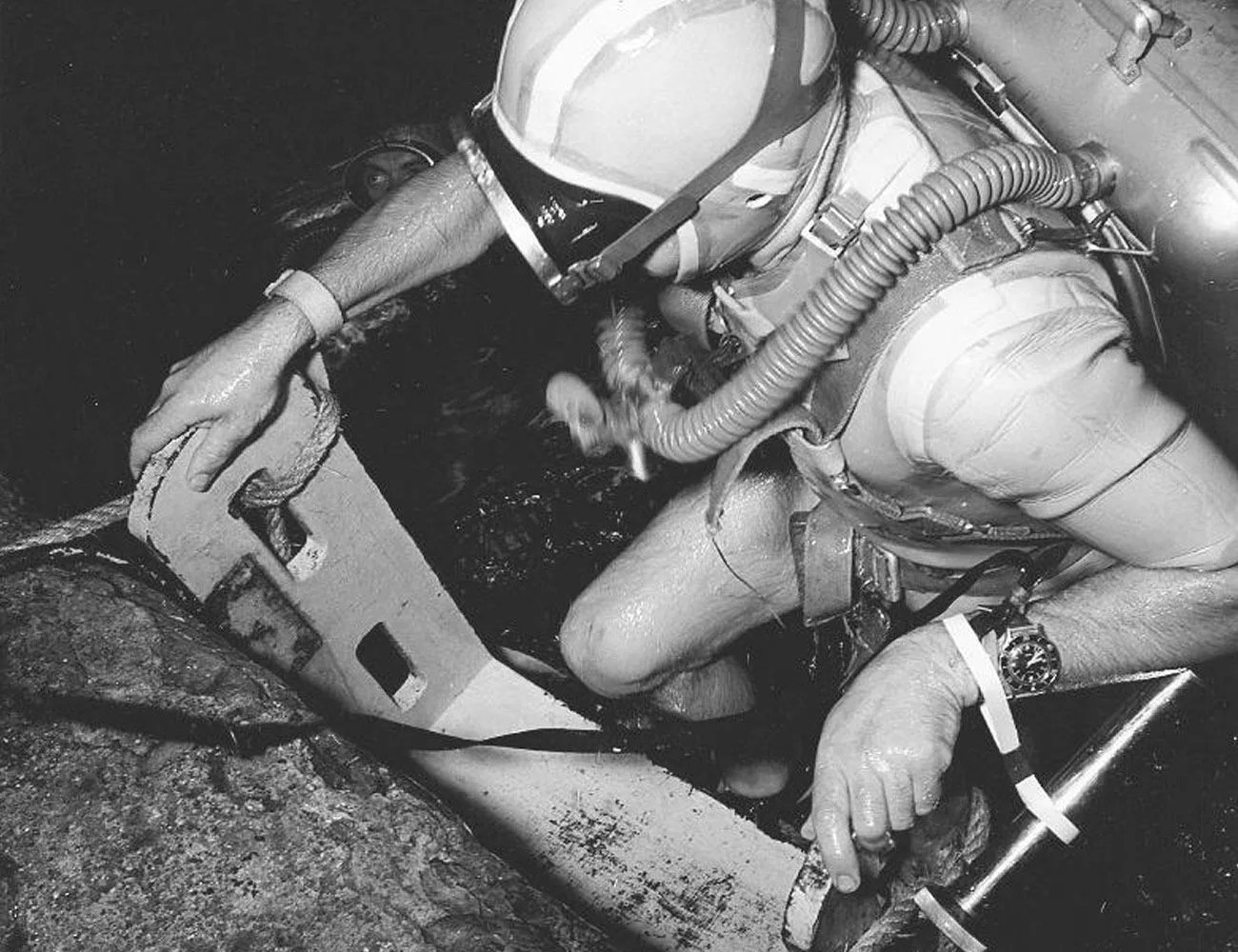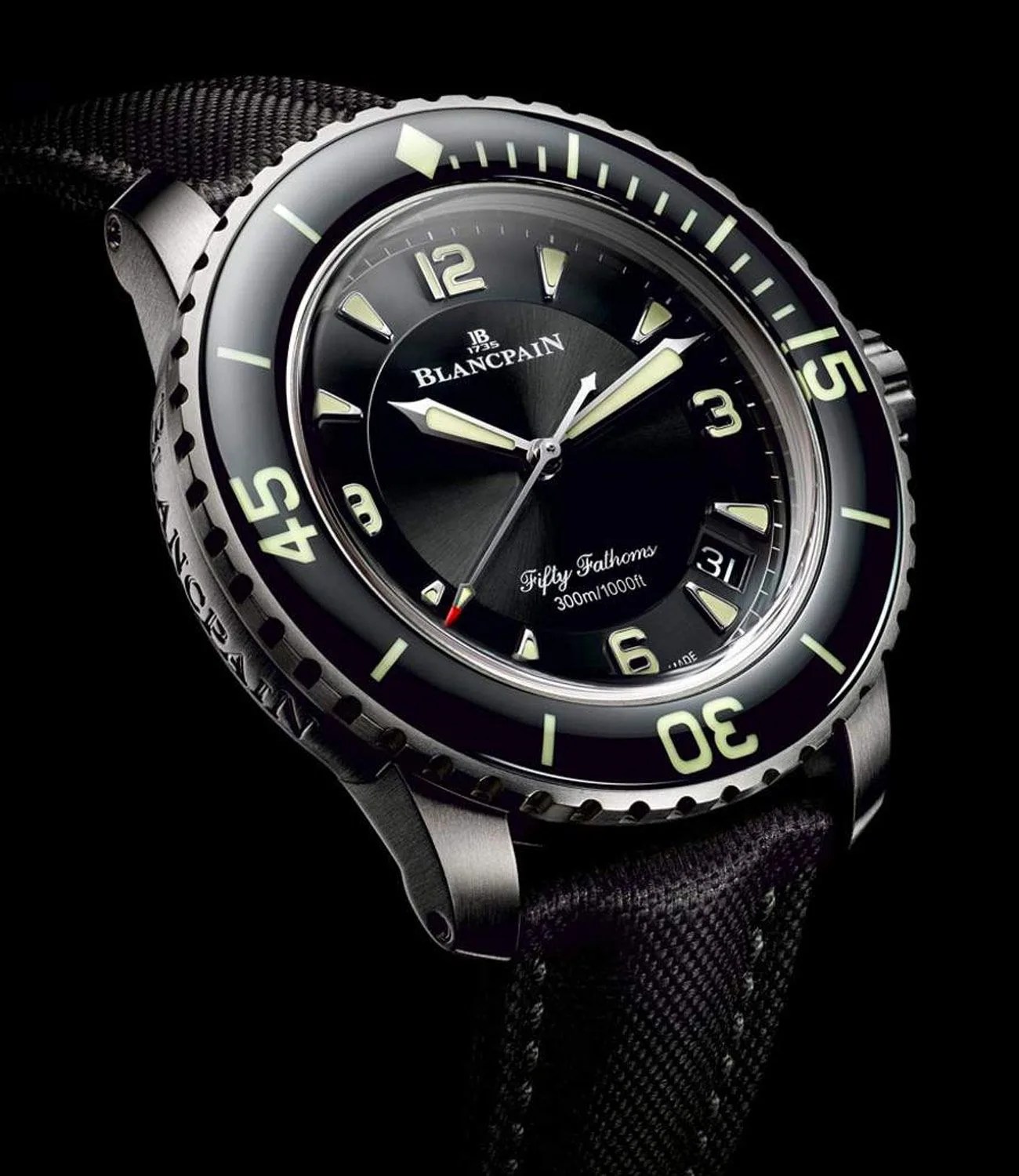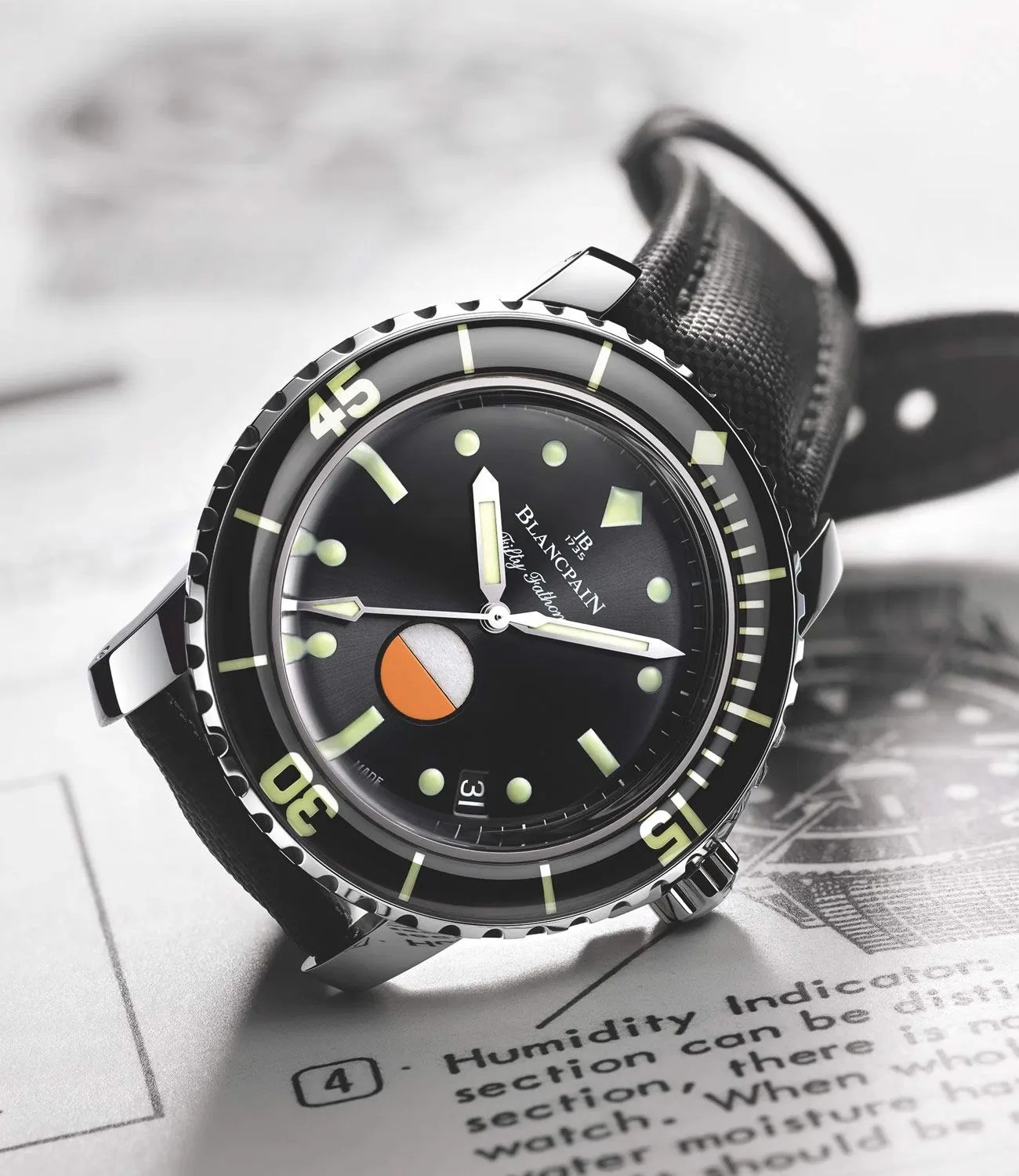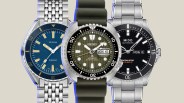Welcome to Watches You Should Know, a biweekly column highlighting important or little-known watches with interesting backstories and unexpected influence. This week: the Blancpain Fifty Fathoms.
The variations are endless, but you know a dive watch when you see one. It’s not just water resistance, but a familiar combination of practical diving features that give the dive watch the basic, unmistakable form we know today. Though watchmaking typically advances incrementally — and technical progress had been building toward a dive-centric timepiece for decades — in 1953 the modern dive watch concept seems to have burst onto the scene fully formed.
It must’ve been demand, solid market research, and the advent of recreational diving that led three totally unrelated companies — Rolex, Zodiac and Blancpain — to introduce automatic dive watches with remarkably similar traits: they were water-resistant to roughly 100m, featured highly legible, luminous dials and included the most visually and functionally defining dive watch trait of all: prominent rotating bezels.
 Blancpain
BlancpainRolex’s Submariner became the most famous watch in history, of course, and Zodiac’s Sea Wolf today offers an interesting and relatively affordable avenue to this heritage. Neither, however, has the compelling origin story of Blancpain’s Fifty Fathoms, which was developed with military use in mind: It was made to the specifications of France’s elite military unit known as the nageur de combat, the “combat swimmers,” akin to American Navy SEALs.
It was Captain Robert Maloubier and Lieutenant Claude Riffaud of the combat swimmers who reached out to watch companies to create a diving watch with a black face, rotating bezel and dial markers that were bold, legible and glow-in-the-dark. Reportedly having been told by French watchmaker LIP that the design was “a portable clock without any future,” they finally went to Blancpain, whose CEO was an avid amateur diver and already interested in making a dive watch.
 Blancpain
Blancpain


